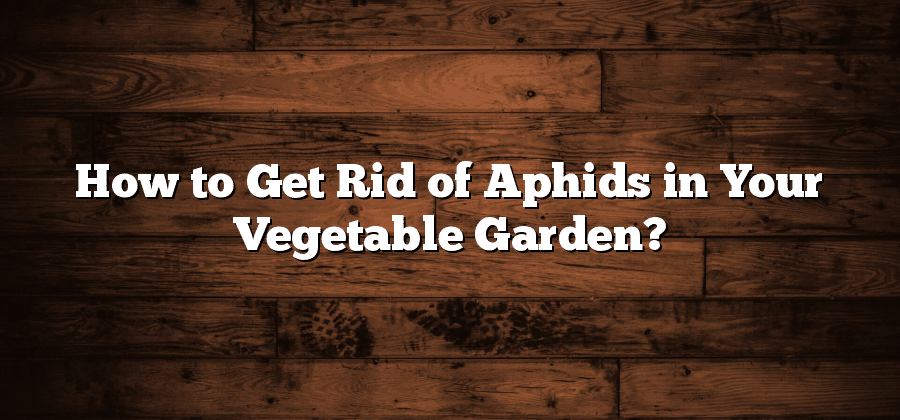Identifying Aphids in Your Vegetable Garden
Aphids, small and soft-bodied insects, are common pests that can wreak havoc in your vegetable garden. They come in various colors, including green, yellow, black, and even pink. Identifying aphids can be relatively easy as they often gather in clusters on the undersides of leaves or stems, sucking sap from plants and causing stunted growth. These tiny insects also excrete a sticky substance known as honeydew, which attracts ants and can lead to the growth of black sooty mold.
One way to identify aphids is by their unique appearance. They have pear-shaped bodies with long antennae and a tubelike structure called a stylet, which they use to pierce the plant tissue and extract sap. Additionally, aphids produce winged individuals during overcrowded conditions or when their food supply becomes scarce. By recognizing these key characteristics, you can effectively diagnose and address aphid infestations in your vegetable garden, ensuring the health and productivity of your plants.
Understanding the Life Cycle of Aphids
The life cycle of aphids is a fascinating process that plays a crucial role in their ability to survive and reproduce. It begins with the eggs, which are typically laid on the underside of leaves or in crevices of plants. These tiny, oval-shaped eggs are usually black or brown and can be difficult to spot without close examination.
Once the eggs hatch, the nymphs emerge and start feeding on the sap of the host plant. These nymphs resemble miniature versions of the adult aphids, but they lack wings. As they continue to feed and grow, they molt several times, shedding their exoskeletons in the process. Finally, after going through several molts, the nymphs develop into adults.
The adult aphids possess wings and are capable of both flying and reproducing. They can be either winged or wingless, depending on environmental conditions. Winged aphids are more mobile and can easily travel to new plants, while wingless aphids tend to stay on the same plant. The adults reproduce rapidly, with females giving birth to live young aphids instead of laying eggs. This ability to reproduce asexually allows aphid populations to multiply rapidly under optimal conditions.
Understanding the life cycle of aphids is important for effective pest management in your vegetable garden. By knowing when aphids are most vulnerable, you can take steps to disrupt their life cycle and reduce their numbers. Stay tuned for more information on how to create an aphid-repellent environment in your garden.
Creating an Aphid-Repellent Environment
One effective way to create an aphid-repellent environment in your vegetable garden is by practicing proper crop rotation. Aphids tend to be attracted to specific plants, such as tomatoes, lettuce, and peppers. By rotating your crops each season, you can disrupt their breeding and feeding patterns, making it more difficult for aphids to establish themselves in your garden. This can be done by planting different types of vegetables in different areas of your garden each year.
Another strategy to deter aphids is by companion planting. Certain plants naturally repel aphids and can be grown alongside your vegetables to ward off these pests. For example, planting marigolds, nasturtiums, or chives near your vegetable crops can help repel aphids and other insect pests. Additionally, intercropping vegetables with fragrant herbs like rosemary, lavender, or mint can also help deter aphids. The strong aroma of these herbs can confuse aphids and make it harder for them to locate and feed on your plants.
Encouraging Beneficial Insects in Your Garden
Encouraging beneficial insects in your garden is a natural and effective way to control aphid populations. These helpful insects, such as ladybugs, lacewings, and parasitic wasps, can be attracted to your garden by providing them with the right environment. Planting a diverse range of plants, especially those that produce nectar and pollen, will offer a food source for these beneficial insects. Some ideal plants to consider include lavender, dill, fennel, and yarrow. By incorporating these plants into your garden, you are creating a welcoming habitat for beneficial insects to thrive.
Another way to encourage beneficial insects is by avoiding the use of chemical pesticides. These chemicals can harm or even kill beneficial insects, disrupting the natural balance in your garden. Instead, opt for organic and natural pest control methods, such as releasing ladybugs or lacewings into your garden. These insects will feast on the aphids, keeping their population in check. Additionally, planting native plants can attract local beneficial insects that are adapted to your specific area, further enhancing their presence in your garden. By embracing these eco-friendly practices, you are not only protecting beneficial insects, but also promoting a healthier and more sustainable garden ecosystem.
Using Homemade Aphid Sprays
Paragraph 1:
When it comes to combating aphids in your vegetable garden, homemade aphid sprays are a popular choice among many gardeners. These sprays are often made using common household ingredients such as dish soap, cooking oil, and water. One of the advantages of using homemade aphid sprays is that they are cost-effective and easy to create, allowing you to save money while effectively dealing with these pesky insects.
Paragraph 2:
To make a homemade aphid spray, you can start by mixing a few drops of dish soap with water in a spray bottle. The soap acts as a surfactant, helping to break down the wax coating on the aphids’ bodies and causing them to dehydrate. Another option is to combine vegetable oil with water and adding a few drops of dish soap. The oil in this mixture suffocates the aphids, leading to their demise. It’s important to note that homemade aphid sprays are best used as a preventive measure or for early infestations. For severe infestations, consulting a professional or using commercially available insecticides may be necessary.






